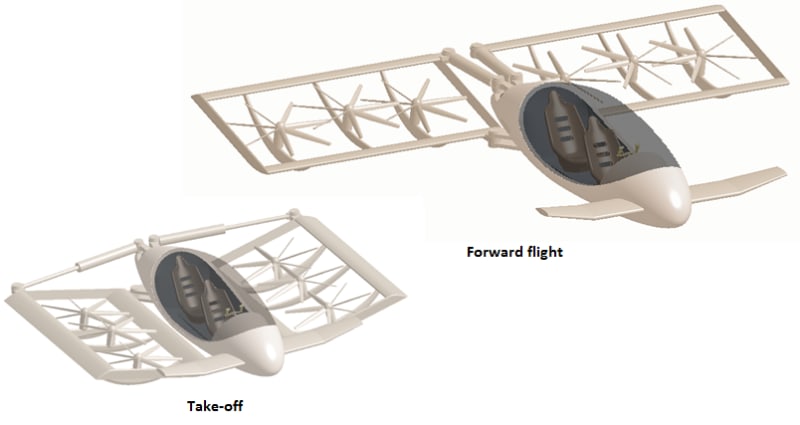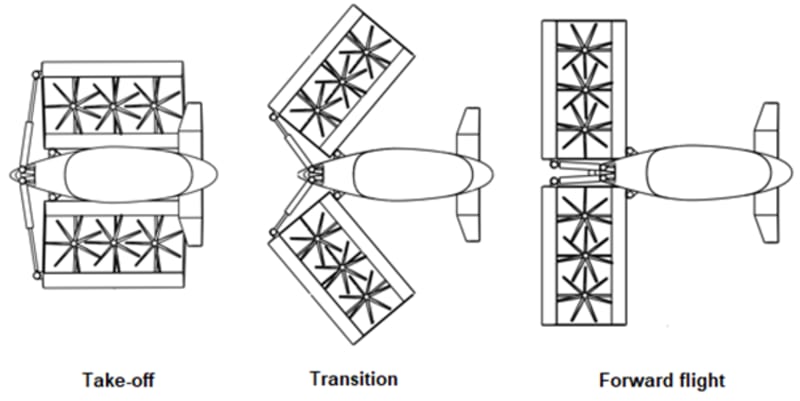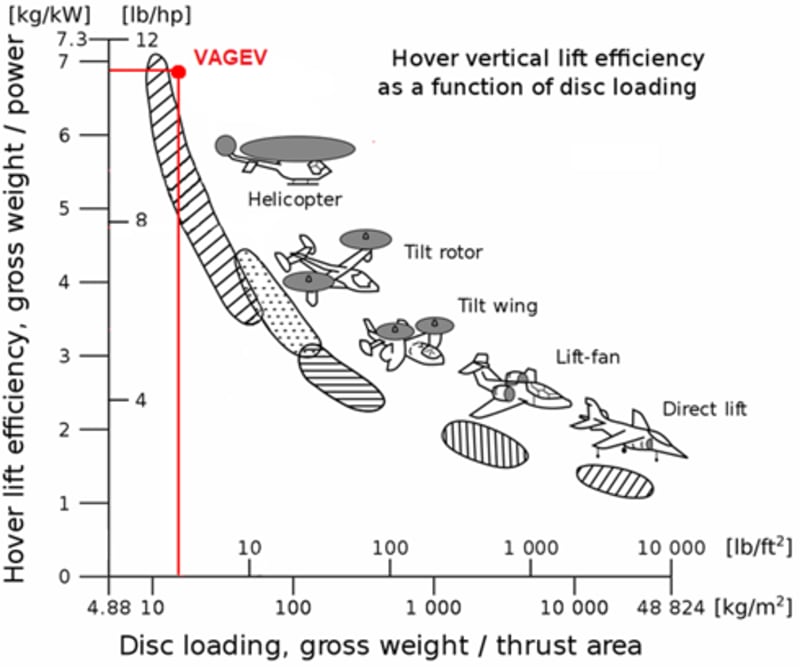With VAriable GEometry VTOL aircraft –VAGEV we propose an extremely compact VTOL configuration which produces thrust augmentation effects in vertical flight to reduce the size and the weight of the energy source. VAGEV can be the launch pad for a VTOL system able to operate safely near vertical obstacles, within urban environments, forests or mountains. VAGEV can take-off and land on and from scarcely prepared areas.
During WW2 Leroy Grumman realized the importance of innovative ideas to meet established needs of the U. S. Navy regarding the utilization of the limited space existent on the aircraft carriers. That why the first folding wing mechanism (STO-Wing) was developed by Grumman in early 1941 and first applied to the XF4F-4 Wildcat, manufactured by the Grumman Aircraft Engineering Corporation. This idea was further developed in our days by a VTOL aircraft developer. However, adding the electric motor masses to the load of the wings increases even more the solicitations of the “in wing joints”, making highly improbable this application for medium and large VTOLs, respectively for passenger aircraft.
VAGEV is a vertical takeoff and landing aircraft with variable geometry that uses an aerodynamic fuselage having at its rear side four cylindrical joints, two upper and two lower, which support a propulsion system. The propulsion system consists of two movable biplane wings that can rotate each on one of the lower cylindrical joints. Each mobile biplane wing is formed by a frame containing at the bottom a lower wing, and respectively at the top an upper wing, both having an aerodynamic profile that has an angle of incidence. The upper and lower wings are joined at their ends by two connecting strips. Inside each frame a network of rotors (or propellers) is attached, placed in line and positioned inclined to the horizontal plane. Each rotor is driven by an electric motor that is attached to an intermediate crossbeam fixed at one end on the lower wing and at the other end on the upper wing. At the front of the aircraft, two Canard wings which contain flaps can be mounted on either side. To support the increased mass of a biplane wing a robust joint attached directly to the fuselage at a small distance is used in similar manner like those for the supersonic fighters with variable geometry. With this new arrangement applied to a Canard aircraft configuration, this concept achieves a good reliability even at increased acceleration levels.
The key benefits of the VAGEV technology are:
- Improved maneuverability during VTOL and hover, including in high wind conditions
- Increased flight range due to the high lift/drag ratio
- Smooth transitions at all stages between VTOL and forward flight
- Increased hover efficiency combined with reduced disk loading
- Extremely compact size during VTOL operation in the air and on the ground (a 2-passenger vehicle having just 4x 4.4 m)
- Increased payload capacities
- Protected rotors against the contact with the environment and surrounding personnel
Like this entry?
-
About the Entrant
- Name:Liviu Giurca
- Type of entry:teamTeam members:Liviu Giurca, Michael Soimar
- Software used for this entry:Catia V5
- Patent status:pending








